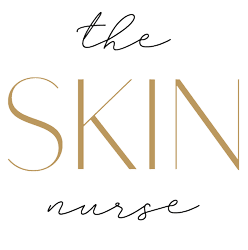Chemical peels are one of the easiest and most effective ways to rejuvenate dull, lifeless skin in need of a boost. They exfoliate your skin to reveal brighter, more healthy layers underneath and they’re quickly becoming one of the biggest beauty trends.
While chemical peels do wonders for your skin, they also cause it to be dry and sensitive for a while before the effects start to show. If you’ve just had a chemical peel or you’re planning on having one done, read on to find out the difference between various peels as well as chemical peel aftercare tips to make sure your skin is getting the added post-peel TLC it needs.
What is a chemical peel?
A chemical peel is a non-invasive treatment where a chemical solution is applied to the skin to remove the top layers. Peels can be used to treat fine lines and wrinkles, discolouration and acne scars, and the procedure is usually done on the face and neck. The skin that grows back after the peel is smoother and brighter.
Depending on the severity of the concern, chemical peels can be done at different depths. Deeper chemical peels can offer better results for more serious concerns but the recovery time can take longer. Generally speaking, there are three different kinds of chemical peels with varying levels of penetration. They include superficial, medium and deep peels.
Superficial peels –
As their name suggests, superficial peels don’t penetrate very deep under the skin’s surface. They only reach the epidermis, which is the outermost layer of your skin. Examples of superficial peels include mild acids like alpha-hydroxy acid. With these types of peels, you’ll likely only experience very mild irritation.
Medium-depth peels –
a medium-depth chemical peel will reach the middle layers of the skin and includes acids such as trichloroacetic or glycolic acid. These types of peels are more effective for the treatment of deeper lines and wrinkles and darker marks.
Deep peels –
deep chemical peels fully penetrate the middle layers of the skin to slough away damaged skin cells. These types of peels are most effective at addressing more severe skin concerns
1. Don’t over-exfoliate
Peels are maximum-strength exfoliants so your face doesn’t need any help in that department for about 3-4 days after undergoing a chemical peel. Stay clear of any scrubs and facial brushes or mitts. Over-exfoliating your skin can damage it and cause irritation, resulting in redness, dryness, and in some instances, bruising.
About a week after a peel, it’s generally ok to resume your exfoliation routine. However, if your skin still feels like it isn’t back to normal, give it a few more days to rest.
2. Rehydrate your skin
After a chemical peel, your skin can feel like it’s been stripped of moisture because its protective barrier has been temporarily compromised in order to get underneath the skin and exfoliate any dead or damaged skin cells. That’s why it’s important to help your skin build up its natural barrier again by applying a deeply hydrating moisturiser. Dehydration can cause your skin to feel tight and may cause dehydration lines.
While it’s important to use an ultra-hydrating moisturiser, you shouldn’t apply it too often as this could counteract the effects of the peel. You don’t want your skin to cling onto the dry, dead skin cells it’s supposed to shed by over moisturising it. But, if you apply too little your skin could feel tight and uncomfortable. Besides hydrating topically, it’s also important to drink plenty of water!
3. Use sunscreen
Whether you’ve just had a chemical peel or not, you should apply sunscreen every day to minimise the aging, not to mind cancer-causing, effects of the sun. However, applying sunscreen after a peel is even more important. This is because the two mechanisms the skin uses to help protect itself from UV radiation are compromised by your skin being peeled away.
The outer layer of the skin thickens in order to protect itself from the sun, but if you remove the first few layers of your skin, this defense barrier is removed as well. Additionally, melanin, the pigment that gives you a tan when you’ve been out in the sun and protects your skin from sun exposure, is produced in the melanocytes, which are skin cells found in the inner layer of the epidermis, called the stratum basale. You’re also removing these melanin-producing skin cells when you shed the first few layers.
This is why it’s so important to protect your skin from the sun in the first two weeks after a chemical peel. Apply a broad-spectrum sunscreen, that protects you from both UVA and UVB rays, of no lower than SPF 30, and wear a wide-brimmed hat when going outdoors.
4. Let your skin peel naturally
We know it’s tempting when you see your skin start to shed to help it along by peeling off the loose, dead skin, but please try to avoid touching!
The cutaneous barrier created by the skin plays a very important part in protecting your immune system from pathogens and viruses. After this barrier has been disrupted, it becomes more vulnerable to infections, especially when introducing germs through touching. Additionally, after a peel, your pores are dilated so any bacteria on your hands could easily find its way into your pores and cause a breakout.
5. Avoid intense workouts and saunas
Activities such as strenuous workouts and sitting in a sauna should be avoided after a chemical peel as they increase blood flow to the face, which can irritate the skin and cause it to itch and tingle and may cause redness.
Another reason to avoid heavy workouts is because the salt from your sweat can further irritate your skin and cause it to sting.
Opt for more relaxed forms of exercises like yoga or walking for a few days after a peel, especially after a deep peel, and give your skin lots of rest so that it doesn’t feel overstimulated.






